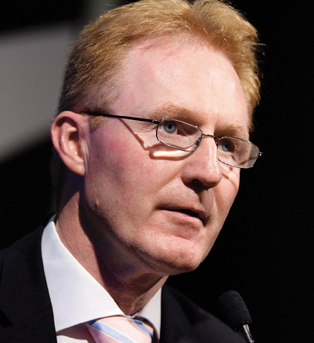Ireland has issued early in January over the past few years, and 2017 was to prove no exception, with the country issuing a 20-year benchmark deal that exceeded expectations with regards to pricing and the geographic spread of investors.
Ever since it exited the EU bailout programme in 2013, Ireland has made a point of being transparent with investors about its funding needs. In December 2016, therefore, the country announced a funding range of €9bn to €13bn for 2017. The range was rather higher than the previous year’s €6bn to €10bn but it certainly did not spook the market.
“The range is higher than last year but it’s not a big amount by historic standards. In simple terms it is driven by our redemption profile, the Exchequer borrowing requirement and some contingency,” says Frank O’Connor, director of funding and debt management at Ireland’s National Treasury Management Agency (NTMA).
An early riser
As is the case with many debt management agencies, the NTMA tends to bias its funding towards the first half of the year. But Ireland has also established a tradition of coming to the market early after the Christmas break.
“In recent years, as we came out of the EU/International Monetary Fund (IMF) programme of assistance, we have been one of the first to issue in January. At that time, we wanted to show that we had access to the market and that our credit story was an improving one,” says Mr O’Connor.
Although Ireland’s economic recovery is now firmly established – and it is now the fastest growing economy in the eurozone – the temptation to be first off the block in January persists. And the market has become accustomed to seeing Ireland as an early issuer.
“We didn’t need to issue. There was no particular deadline ahead of us. But we knew the market would not be surprised to see Ireland launch a transaction early. We knew there was demand and, by going first, we are able to set our own price. We don’t have to price ourselves relative to any other countries’ new issue so it gives us something of a first-mover advantage,” says Mr O’Connor.
New year, new deal
With that in mind, the NTMA announced on the afternoon of January 3 that it expected to issue a benchmark deal in the near future, subject to market conditions. That very morning it had mandated Barclays, Cantor Fitzgerald, Danske Bank, HSBC, JP Morgan and Morgan Stanley as bookrunners.
“We have 16 primary dealers and we have chosen six bookrunners for each of our deals since we came out of the EU/IMF programme of assistance. We have our own system of marking our primary dealers, based on their performance particularly around auction take-up and secondary market turnover. So they need to be at the upper end of the ranking to be considered for selection as a bookrunner. We also look at who might be good for geographical distribution,” says Mr O’Connor.
This was the first day of the new year for many in the market but the NTMA makes a point of seeing investors on a regular basis so it was fairly confident about the demand for Irish credit. The country had not tapped the market since a bond auction on November 3 and it had not issued a transaction with a long maturity since 2015.
“The European Central Bank has been in the market buying bonds across the eurozone. In Ireland’s case this has been significant relative to our issuance so supply is tight in general terms. There was also strong support for Irish credit, especially as we hadn’t been in the market for a while and last year most of our issuance was around our new 10-year benchmark. We have 15-year and 30-year benchmarks outstanding but we were missing a benchmark point in the curve at the 20-year end so we wanted to fill that gap,” says Mr O’Connor.
On January 3, as investors adjusted to the new year, market sentiment was slightly negative. But the following day, bond prices bounced back and the mood seemed calm. Ireland decided to make its move.
Exceeding expectations
Initial price thoughts were released at 8.30am, suggesting a spread of about 51 to 56 basis points (bps) over mid-swaps. Early demand was strong and at 9.40am the books officially opened with price guidance of mid-swaps plus 52bps. Orders mounted and just over an hour later, the final spread was set at mid-swaps plus 50bps. The book continued to build, even after the price had been shaved, and by 11.15am, when the transaction closed, more than €11bn of orders had been received, allowing Ireland to increase the size of its first benchmark of 2017.
“We were very pleased with the transaction. The breadth and depth of the book allowed us to do a €4bn transaction when we would have been very happy with a €3bn deal. So it was a great result for us,” says Mr O’Connor.
The deal was not only significantly larger than the NTMA had originally planned but 97% of the orders came from overseas, testament to Ireland’s work with institutions across Europe and beyond.
“Our investor base is very important to us so we were particularly pleased with the geographical make-up of the book,” says Mr O’Connor.



